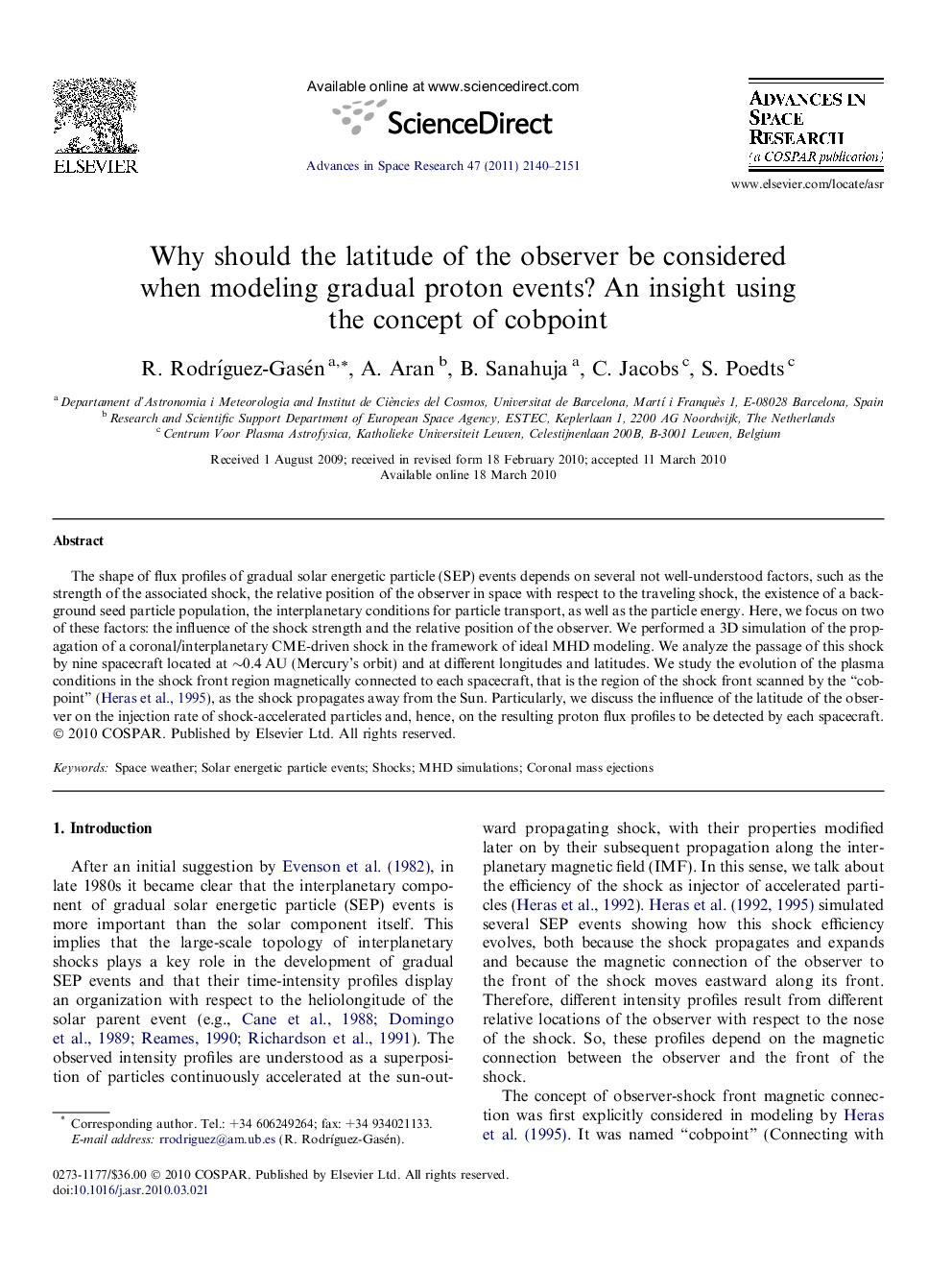| Article ID | Journal | Published Year | Pages | File Type |
|---|---|---|---|---|
| 1766587 | Advances in Space Research | 2011 | 12 Pages |
Abstract
The shape of flux profiles of gradual solar energetic particle (SEP) events depends on several not well-understood factors, such as the strength of the associated shock, the relative position of the observer in space with respect to the traveling shock, the existence of a background seed particle population, the interplanetary conditions for particle transport, as well as the particle energy. Here, we focus on two of these factors: the influence of the shock strength and the relative position of the observer. We performed a 3D simulation of the propagation of a coronal/interplanetary CME-driven shock in the framework of ideal MHD modeling. We analyze the passage of this shock by nine spacecraft located at â¼0.4Â AU (Mercury's orbit) and at different longitudes and latitudes. We study the evolution of the plasma conditions in the shock front region magnetically connected to each spacecraft, that is the region of the shock front scanned by the “cobpoint” (Heras et al., 1995), as the shock propagates away from the Sun. Particularly, we discuss the influence of the latitude of the observer on the injection rate of shock-accelerated particles and, hence, on the resulting proton flux profiles to be detected by each spacecraft.
Related Topics
Physical Sciences and Engineering
Earth and Planetary Sciences
Space and Planetary Science
Authors
R. RodrÃguez-Gasén, A. Aran, B. Sanahuja, C. Jacobs, S. Poedts,
